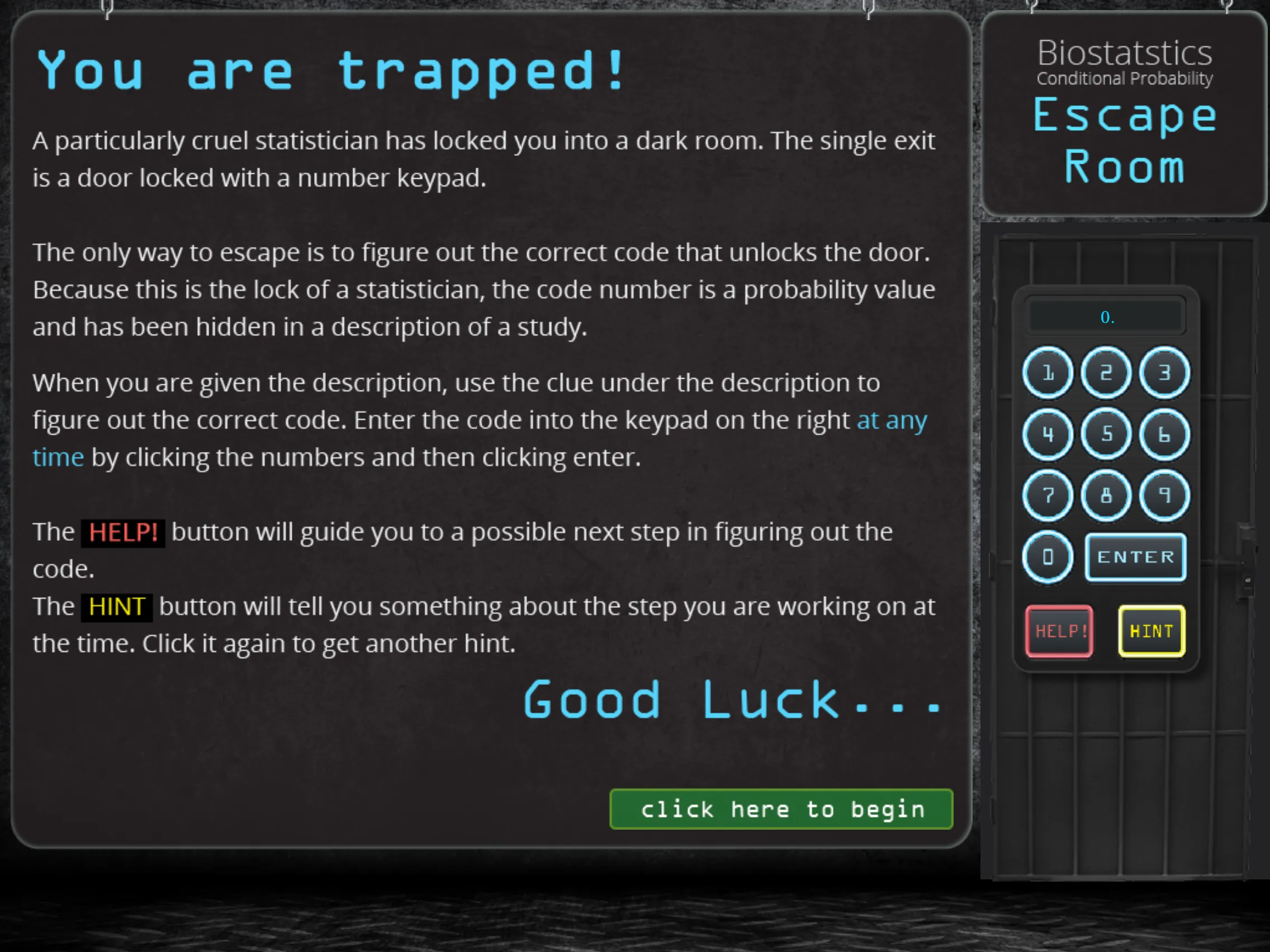
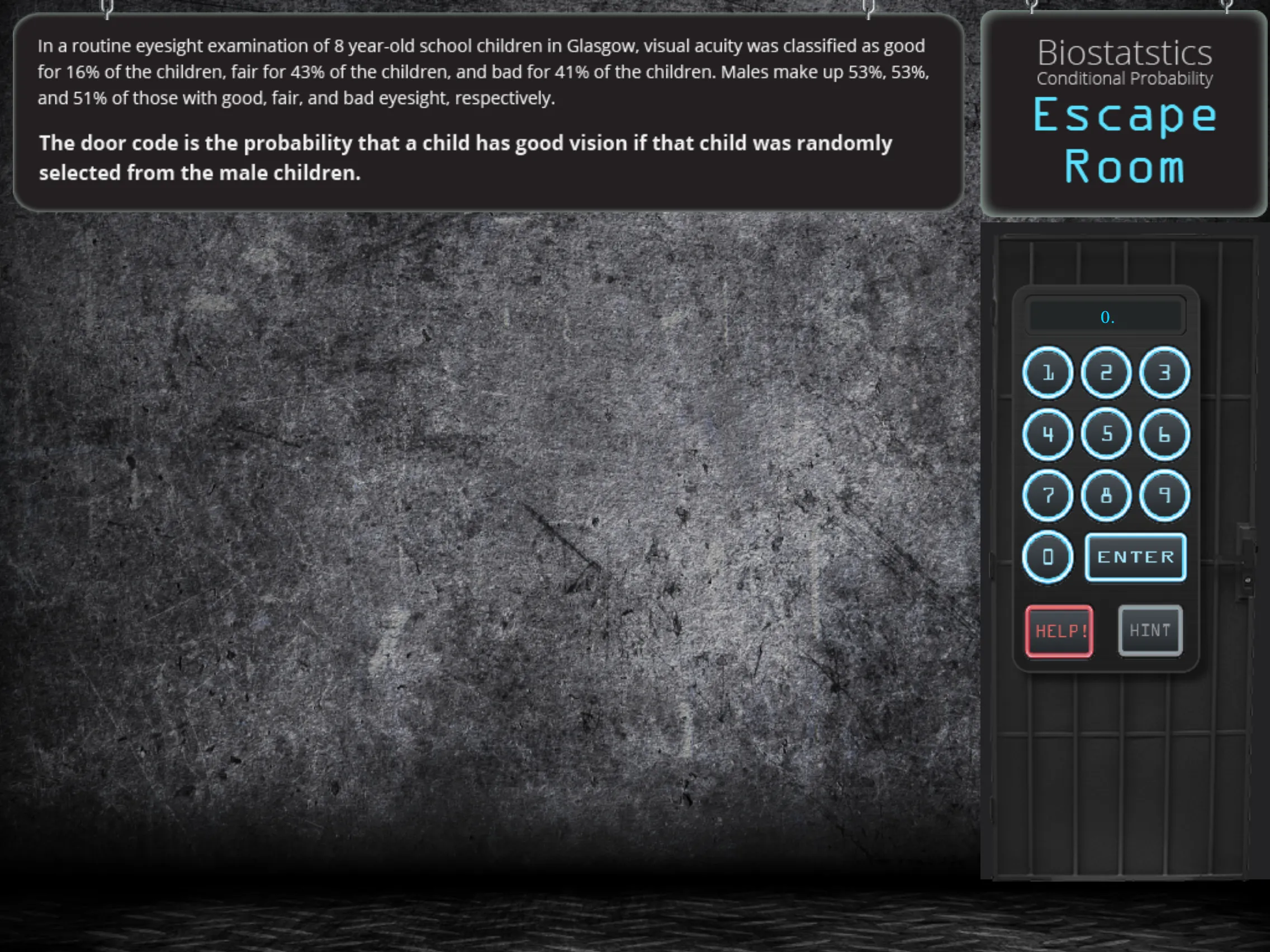
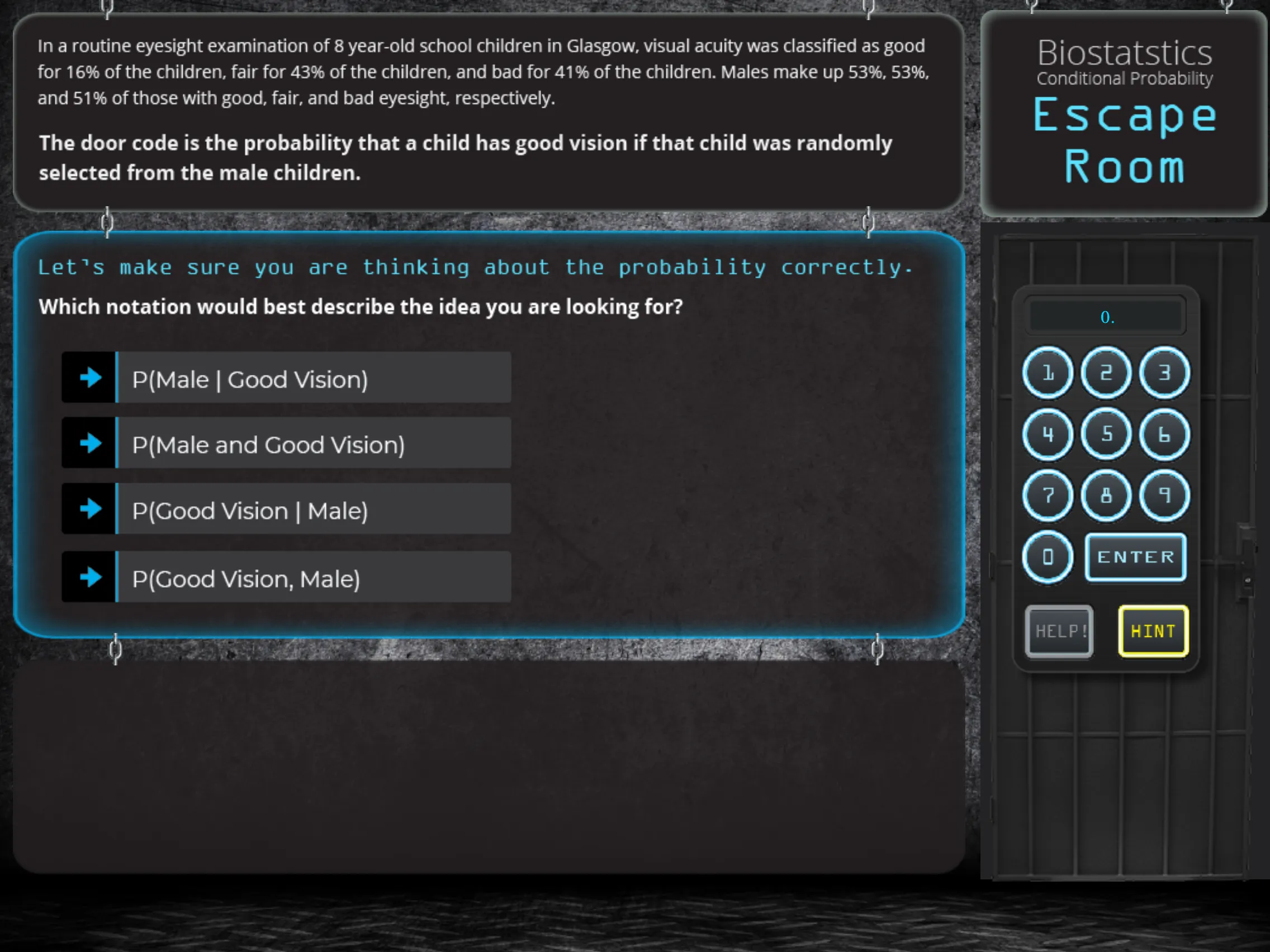

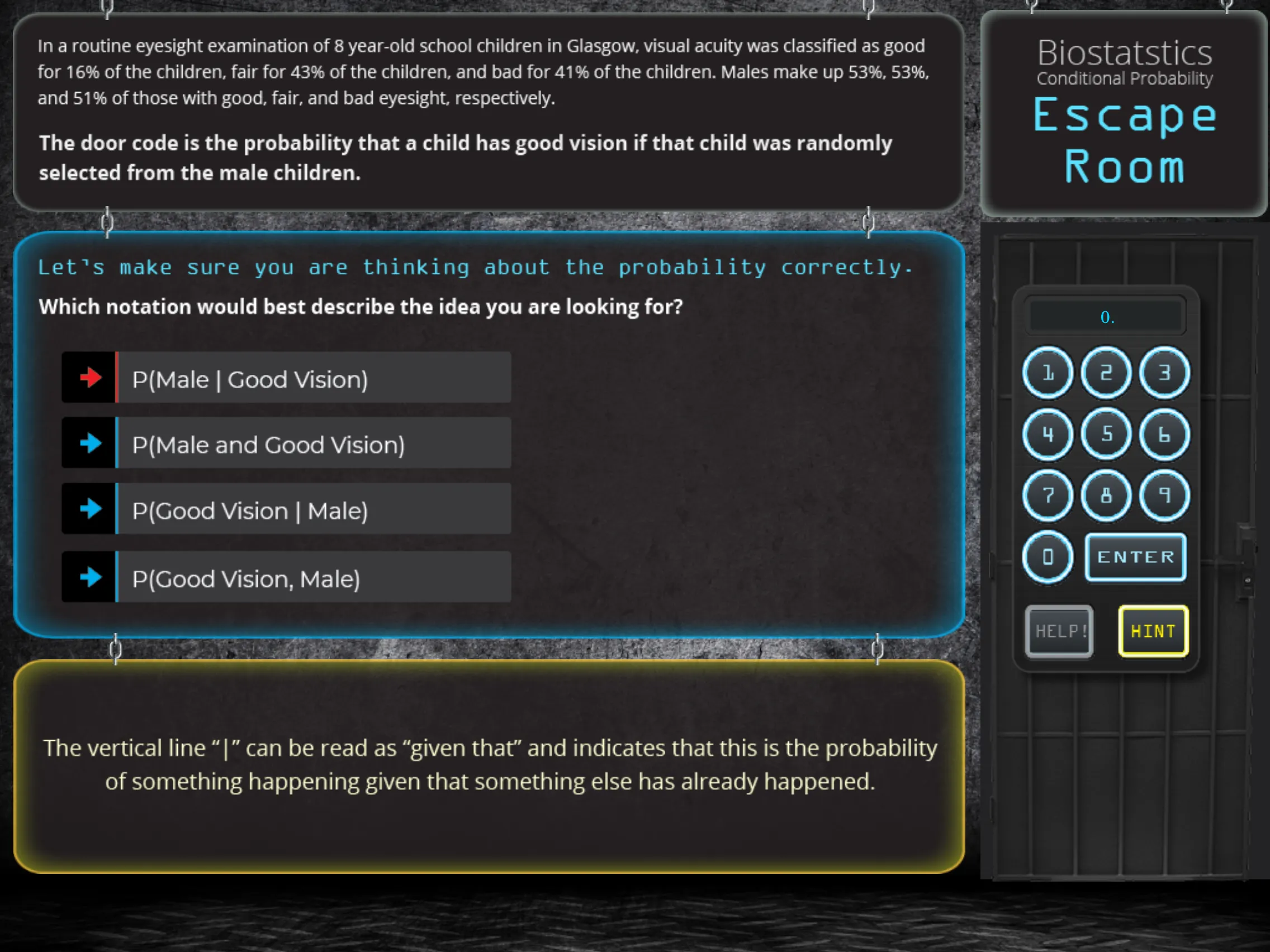


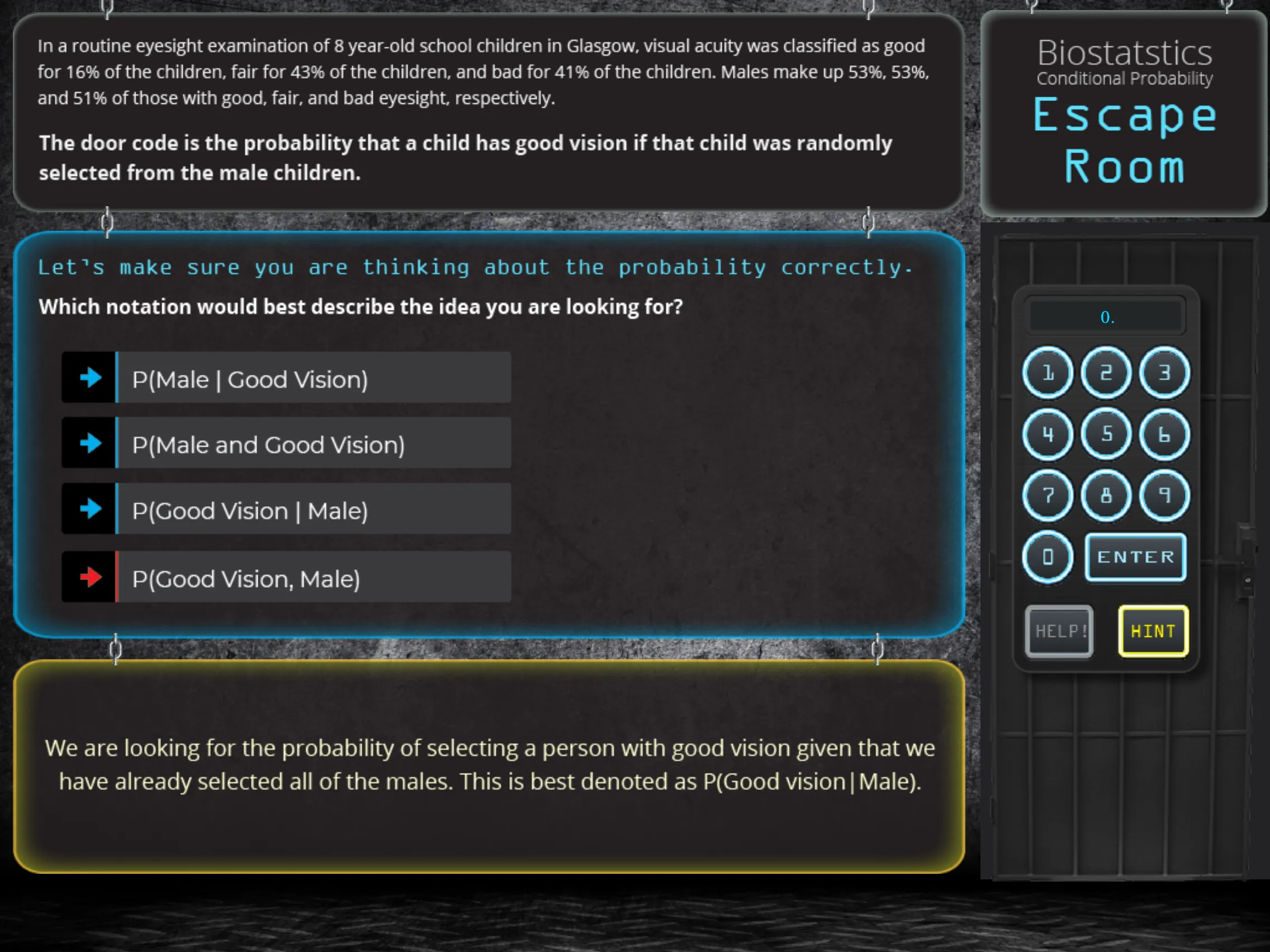
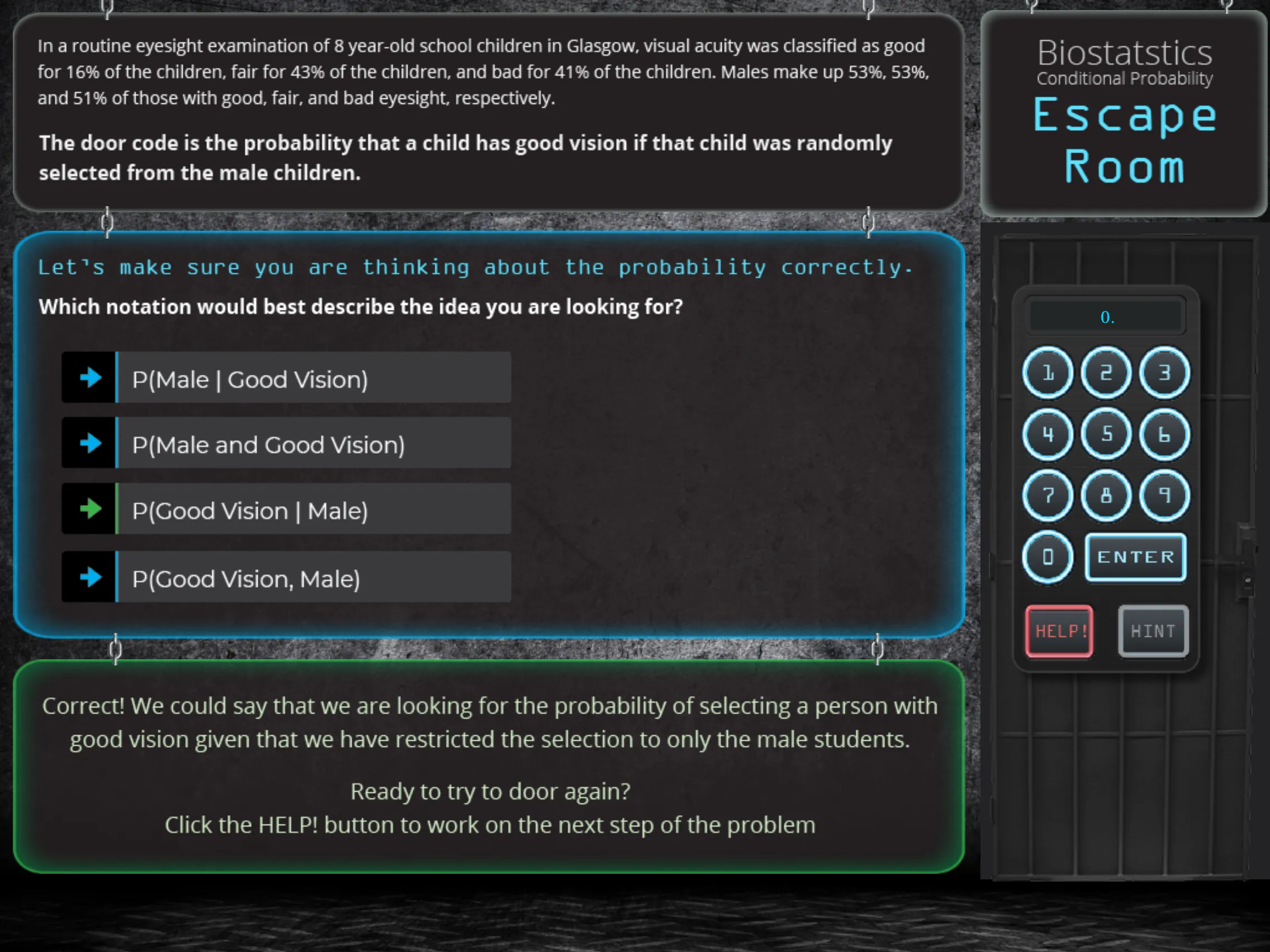
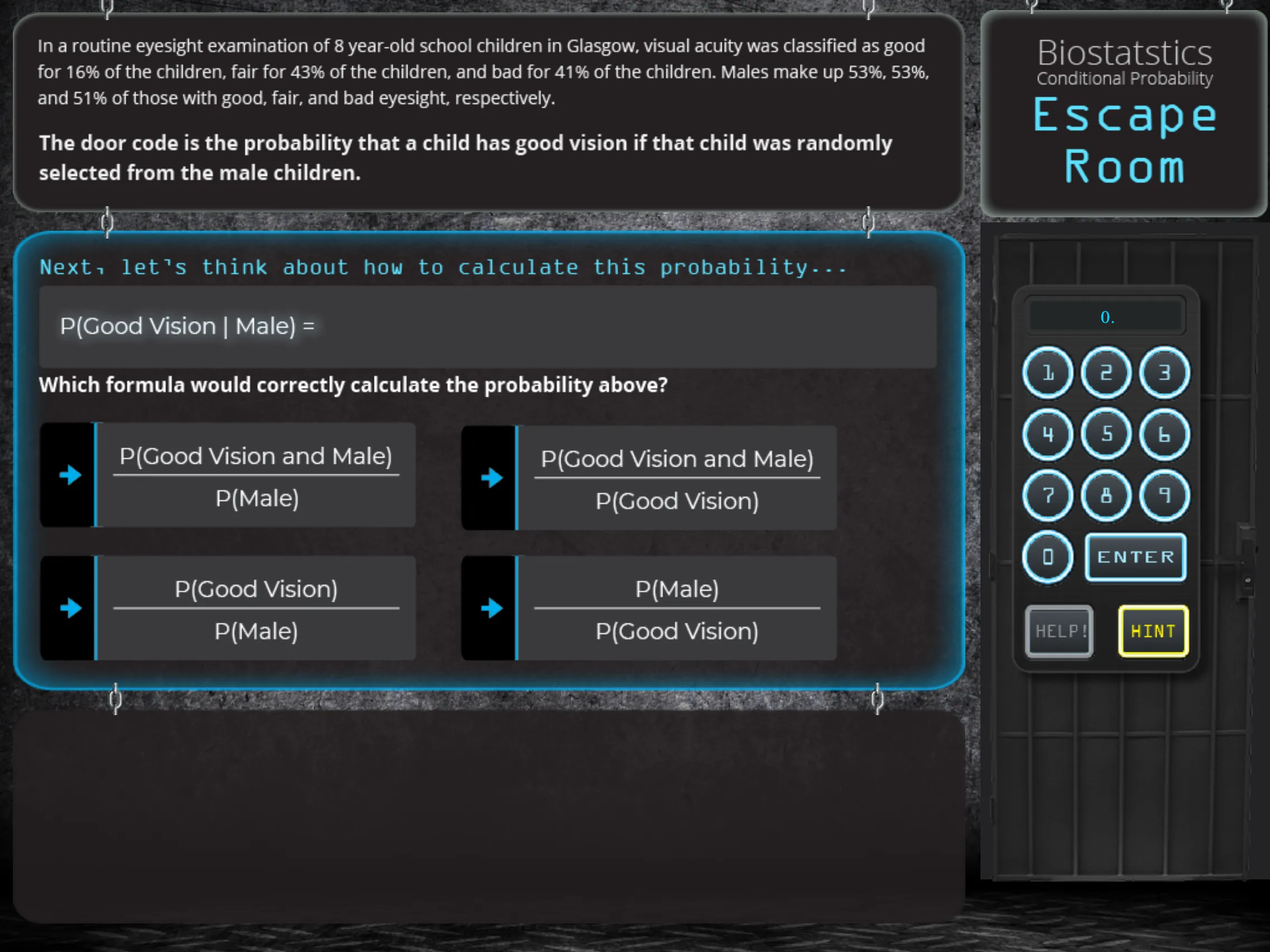
Statistics problems are often multi-step and complex, where a single mistake can send learners down the wrong path with no way to recover. Traditional problem sets offer no immediate help, leaving learners stuck and frustrated.
Traditional problem sets often overwhelm students because each problem requires multiple steps before reaching an answer, and only then do they know whether the entire process was correct.
A wrong answer means the frustrated student must restart at the beginning. The result is often:
inefficient learning
unmotivated students
high cognitive load
misunderstanding complex concepts
When the University of Pittsburgh Institute for Clinical Research Education (ICRE) decided to "flip" their classrooms, the practice problem sets used in the Biostatistics course needed to be converted from paper-based into digital forms.
I saw this as an opportunity to go beyond merely digitizing the problem sets to transforming the way students interacted with these practice problem and address the shortcomings of the existing assignments.
Statistics problems are often multi-step and complex, where a single mistake can send learners down the wrong path with no way to recover. Traditional problem sets offer no immediate help, leaving learners stuck and frustrated.
Traditional problem sets often overwhelm students because each problem requires multiple steps before reaching an answer, and only then do they know whether the entire process was correct.
A wrong answer means the frustrated student must restart at the beginning. The result is often:
inefficient learning
unmotivated students
high cognitive load
misunderstanding complex concepts
When the University of Pittsburgh Institute for Clinical Research Education (ICRE) decided to "flip" their classrooms, the practice problem sets used in the Biostatistics course needed to be converted from paper-based into digital forms.
I saw this as an opportunity to go beyond merely digitizing the problem sets to transforming the way students interacted with these practice problem and address the shortcomings of the existing assignments.
To go beyond merely digitizing practice probem sets and address the challenges inherent in practice problem sets, I designed interactive, gamified statistics tutors as part of the ICRE’s online Biostatistics course.
One problem set placed students in a locked room with a numbered keypad securing the exit. The unlock code was hidden within a conditional probability problem. Learners had to correctly solve the problem to escape. If they struggled, the tutor provided step-by-step hints and feedback, guiding them toward the correct solution.
Another problem set framed probability problems as a treasure hunt, where solving calculations revealed map coordinates for the next clue. The game guided learners through increasingly complex probability problems, allowing them to track progress and make real-time corrections.
A key challenge in probability problem-solving is the potential for multiple failure points across dozens of steps. This system prevented unnecessary frustration by:
Identifying specific mistakes so learners didn’t have to review concepts they already understood.
Allowing students to “escape” the problem set as soon as they demonstrated mastery.
Adapting the depth of instruction based on the complexity of the learner’s error.
The SCORM-compliant tutor analyzed every learner input and provided customized feedback based on response patterns like these:
To go beyond merely digitizing practice probem sets and address the challenges inherent in practice problem sets, I designed interactive, gamified statistics tutors as part of the ICRE’s online Biostatistics course.
One problem set placed students in a locked room with a numbered keypad securing the exit. The unlock code was hidden within a conditional probability problem. Learners had to correctly solve the problem to escape. If they struggled, the tutor provided step-by-step hints and feedback, guiding them toward the correct solution.
Another problem set framed probability problems as a treasure hunt, where solving calculations revealed map coordinates for the next clue. The game guided learners through increasingly complex probability problems, allowing them to track progress and make real-time corrections.
A key challenge in probability problem-solving is the potential for multiple failure points across dozens of steps. This system prevented unnecessary frustration by:
Identifying specific mistakes so learners didn’t have to review concepts they already understood.
Allowing students to “escape” the problem set as soon as they demonstrated mastery.
Adapting the depth of instruction based on the complexity of the learner’s error.
The SCORM-compliant tutor analyzed every learner input and provided customized feedback based on response patterns like these:
Practice and learn complex statistics calculations to uncover the secret code that unlocks the door.
Practice and learn probability calculations by searching for a treasure hidden somewhere in the zoo.